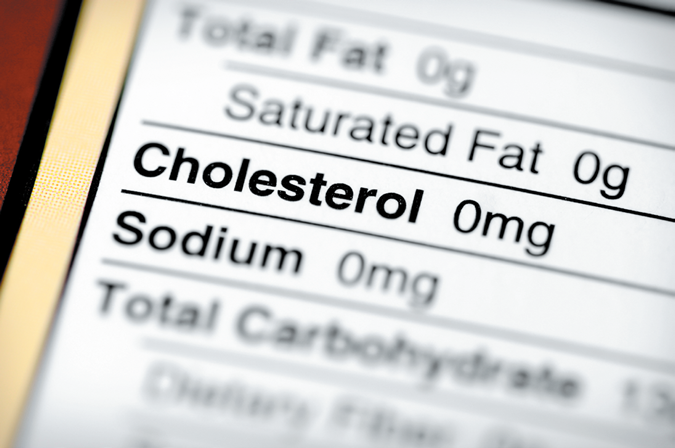For decades, major dietary recommendations in the U.S. included advice to limit intake of cholesterol from foods to 300 milligrams (mg) or less a day. This recommendation was not included in the 2015 Dietary Guidelines for Americans (DGA). Similarly, the 2019 guidance from the American Heart Association (AHA) and American College of Cardiology did not issue explicit recommendations on dietary cholesterol. People with high blood cholesterol levels and others concerned about their heart health may be left wondering what they should do.
What is Cholesterol? Cholesterol is a waxy, fat-like substance that is a major component of cell membranes and is used to make some hormones, vitamin D, and bile acids. Cholesterol does not mix well with water, so it needs to be surrounded by phospholipids (a type of fat that can interface with water) and proteins to move through the body’s water-based blood. These packages, called lipoproteins, are different densities and have different roles. High-density lipoproteins (HDL) are called “good” cholesterol because they carry cholesterol from different parts of the body to the liver for recycling, bile acid synthesis, or disposal. Low-density lipoproteins (LDL) are called “bad” cholesterol because they contribute to the buildup of plaque in the coronary arteries.
The liver and other cells manufacture all the cholesterol the body needs, and we also get cholesterol when we consume animal products such as egg yolks, meat, and cheese. In healthy individuals, the liver lowers the amount of cholesterol it makes in response to dietary intake.
No More Limits? Previous guidelines recommended limiting intake of dietary cholesterol to 300 milligrams (mg) per day or less. The average dietary intake in the U.S. is approximately 250 mg per day in women and 350 mg per day in men—similar to what was recommended. “According to the DGA criteria, dietary cholesterol is no longer a nutrient of public health concern in the U.S.,” says Alice H. Lichtenstein, DSc, vice-chair of the 2015 Dietary Guidelines Advisory Committee and executive editor of Tufts Health & Nutrition Letter. “Additionally, available evidence from intervention and observational studies suggests that dietary cholesterol at the levels currently consumed does not have a big influence on cholesterol levels in the blood.”
A new scientific advisory from the AHA analyzed all available human data on dietary cholesterol and cardiovascular disease (CVD) risk. “We concluded that dietary guidance should focus on healthy dietary patterns that are inherently relatively low in cholesterol, not on counting milligrams of cholesterol,” says Lichtenstein, one of the authors of the report. “Guidance that focuses on dietary patterns emphasizing whole grains, vegetables, fruits, legumes, fish, fat-free and low-fat dairy products, and healthy oils is more likely to improve diet quality and promote cardiovascular health.”
What to Do: While the amount of dietary cholesterol consumed may not have a strong impact on blood cholesterol levels or CVD risk in most people, type of dietary fat does. “Most foods contributing cholesterol to the U.S. diet, such as meat and full-fat dairy products, are also high in saturated fat or consumed with foods high in saturated fat. Cholesterol-rich eggs, for example, are often eaten with saturated-fat-richbacon and sausage,” says Lichtenstein. Dietary fat has a major influence on the amount of cholesterol circulating in the blood and building up in the arteries. In general, high intake of saturated and trans fat raises LDL (bad) cholesterol levels. “The available evidence suggests that replacing saturated fat with unsaturated fat, particularly polyunsaturated fat, within the context of overall healthy dietary patterns is expected to produce greater reductions in LDL cholesterol levels than reducing dietary cholesterol alone,” says Lichtenstein.
The AHA report concludes that eating a healthy dietary pattern, such as Mediterranean-style and DASH-style diets, is the best way to control LDL cholesterol levels. A healthy dietary pattern automatically provides low levels of dietary cholesterol, emphasizes unsaturated fats, and limits intake of saturated fats.
-Follow a heathy dietary pattern, with plenty of fruits, vegetables, whole grains, low-fat or fat-free dairy products, healthy protein sources (including fish and beans), nuts, seeds, and liquid vegetable oils, and limited in refined grains, added sugars, processed meats, and sodium.
-Choose foods high in poly- and monounsaturated fats (nuts/seeds, avocado, fatty fish, and non-tropical plant oils) in place of foods high in saturated fat (like meat, full-fat dairy products, and tropical oils).
























